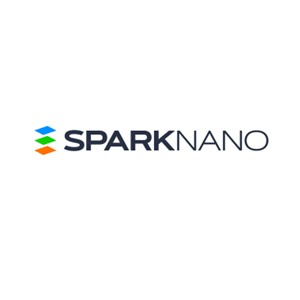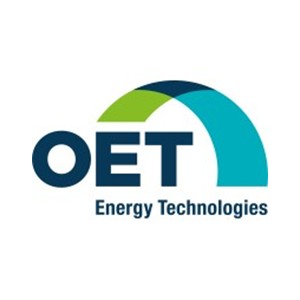AGENDA
Perovskite Materials | Perovskite Inks | Perovskite Quantum Dots | Perovskite Printing and Solution Processing | Production Processes | Manufacturing, Scale-Up and Commercialization | Photovoltaics | Perovskite LEDs | Perovskites for Displays | Perovskite Sensors | Testing and Measurement | Start Ups | Market Analysis, Forecasts and more...
Perovskite Connect is co-located with the Future of Electronics RESHAPED Europe conference and exhibition.
You can participate at all conference tracks and visit the entire exhibition floor.
Explore the talks from the 2025 Event
Day 1 | 21 October
This agenda is for the Perovskite Connect talks and is a part of the full conference agenda
Track 1
Perovskite Keynotes - Track 2-3
Track 1
Track 2
Track 3
Track 4
Keynotes Track 1 - Estrel Hall A
As the solar industry pushes toward large-scale production, both efficiency and scalable manufacturing must be prioritized. However, the current challenge lies in identifying materials that not only perform well but also scale effectively for mass production. This talk will explore certain materials that can bridge this gap, offering a solution that balances performance and manufacturability, and addressing key material challenges for perovskite solar cells at scale using soluble processes
The goal of significantly reducing CO2 emissions requires a massive expansion of PV installations worldwide. Perovskite cells offer a unique opportunity to enable this at a low consumption of precious resources and energy. This requires metallization and interconnection materials that can be processed at low temperatures. In order to avoid bottlenecks in the supply of silver for contacting and inter-connection of solar cells, the specific silver consumption in the production of solar cells and PV modules must be constantly reduced.
The capillary suspension phenomenon (Koos and Willenbacher, Science 331, 897 2011) provides a unique opportunity to design printable pastes and adhesives with high electrical conductivity at low silver consumption. The addition of a second immiscible liquid to a suspension of particles leads to the self-assembly of a strong particle network controlled by capillary forces in such ternary solid/fluid/fluid systems. This results in a drastic change of texture and flow behavior, but also reduces the percolation threshold leading to a high electrical conductivity at low volumetric particle loading in composites including conductive fillers such as silver particles.
Pastes for the metallization of temperature-sensitive Perovskite solar cells are sintered at low temperature (< 150°C) and include polymeric additives to provide cohesion of printed finger lines and sufficient adhesion to the transparent conductive oxide (TCO) surface layer. The required polymer content can be reduced and the surface properties of the conductive particles in the contact areas can be designed in such a way that high electrical conductivity and low contact resistance are achieved.
The TECC wire concept uses round copper wires for cell interconnection. These wires are coated with a thermoplastic polymer filled with conductive particles. The polymer ensures good mechanical adhesion to the cell surface and the conductive particles enable low contact resistance. Good interconnection at gentle processing conditions in terms of pressure and temperature has been achieved using thermoplastics with low silver content.
Thermoplastic busbars (patent pending) is a recently developed concept further simplifying cell interconnection and reducing resource usage. Electrically conductive, thermoplastic materials melting at low temperature are applied in the metallization process and untreated copper wires are applied in a fast, low temperature stringing process.
The capillary suspension concept has been utilized first to design printable, electrically conductive materials including silver particles but the transfer of the concept to composites including other conductive particles such as copper and silver coated copper or glass particles is straight forward.
Suitable interface materials are highly critical for single-junction but also tandem Perovskite photovoltaics both in terms of power conversion efficiency and, particularly, stability. Using its long experience with fullerenes and fullerene derivatives addressing improved performance of organic photovoltaic devices as starting point, Nano-C has developed a range of new generation electron transporting interface materials allowing for passivation and prevention of delamination. C60 or C70 fullerenes bearing suitable functional groups such as phosphonic, carboxylic or ammonium chloride/iodide allow for the stabilization of the Perovskite phase and adhesion on the adjacent metal oxide layers. Electronic properties can be adjusted for optimized band alignment depending on the specific Perovskite phase used. Molecules synthesized by Nano-C will be described and use cases discussed. The industrial scale manufacturing of fullerenes and new generation fullerene derivatives intended to accelerate the commercial deployment of Perovskite technology will be presented.
High-barrier encapsulants are essential for the protection of perovskite solar cells, acting as a shield against moisture that can cause degradation. These encapsulants create a strong, flexible seal that enhances the cells' durability, longevity, and efficiency. DELO, renowned for its barrier adhesives in organic solar cells, is leveraging its expertise to develop new adhesive solutions specifically designed for perovskite solar cells. This talk will provide insights into DELO's current advancements in this field, highlighting how these new adhesives are tailored to meet the unique challenges of perovskite technology, ensuring improved stability and performance.
Break
--------------------------------
Exhibition & Refreshment Break
3:25 PM
More
Drinks Reception
5:30pm
Day 2 | 22 October
Track 1
Track 2
Track 3
Track 4
joint
Explore
Fraunhofer EMFT
11:15 AM
Endless electronics by R2R processing
Alaa Abdellah
At Fraunhofer EMFT, the latest advancements in digital lithography unlock new opportunities for high-throughput, sustainable electronics manufacturing. By combining a direct-write UV exposure system tailored for fully automated roll-to-roll (R2R) operation with a semi-additive processing approach, we enable the production of ultra-long, even theoretically endless, high-resolution metal patterns. A digitally controlled stitching technique ensures seamless alignment over extended foil lengths, expanding the capabilities of continuous electronics manufacturing.
This versatile platform supports a wide range of applications. Examples include tamper protection foils, flexible superconducting interconnects, and high-density flexible cables for medical catheters. Our technology further allows assembly and integration of packaged or bare die components via advanced bonding methods. We seamlessly combine printing, digital lithographic patterning , and precision integration techniques to deliver adaptable solutions tailored to specific functional and industrial demands.
Endless electronics by R2R processing
11:15 AM
joint
Explore
Eastman Kodak
11:35 AM
Flexo for High-Resolution Roll-to-Roll Manufacturing
Carolyn Ellinger
Mass-produced components are either exact replicates, or contain a high percentage of replicate circuitry, making their manufacture well suited for “analog” print technologies. While screen printing dominates current printed electronics manufacturing, the use of roll-to-roll flexography can be advantaged for volume production of high-resolution designs. This talk will provide an overview of the benefits and challenges of “going roll-to-roll” and using flexo. Examples and data will be shared from lab-scale and production scale evaluations.
Flexo for High-Resolution Roll-to-Roll Manufacturing
11:35 AM
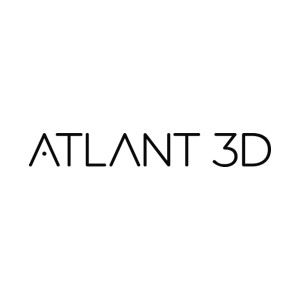
joint
Explore
ATLANT3D
11:55 AM
Direct Atomic Layer Processing (DALP) & Advanced material combinatorics
Laszlo Izso
The exponential growth of computing, connectivity, and intelligent devices demands breakthroughs in how materials, electronics, and systems are built. Conventional semiconductor and microfabrication methods are increasingly constrained by limitations in scalability, flexibility, and sustainability.
Direct Atomic Layer Processing (DALP) offers a new approach: atomically precise, direct, and selective material processing on complex surfaces. Instead of incremental improvements to established methods, DALP represents a paradigm shift, from planar, rigid, and centralized chip-making toward flexible, on-demand, and design-driven fabrication.
This capability enables rapid material discovery and prototyping, accelerating the path from concept to functional device. It also opens new opportunities in advanced packaging, MEMS and sensors, and catalysis, where precision, adaptability, and material diversity are critical. DALP paves the way toward a future where innovation in materials and devices can happen faster, smarter, and with unprecedented freedom.
Direct Atomic Layer Processing (DALP) & Advanced material combinatorics
11:55 AM
joint
Explore
Break
12:15 PM
Lunch Break & Exhibition
Lunch Break & Exhibition
12:15 PM
joint
Explore
Fraunhofer Institute for Laser Technology (ILT)
1:15 PM
Optimizing Local Conductivity in Printed Electronics: A Laser-
Controlled Approach
Adam El-Sarout
In the era of digitalization and Industry 4.0, sensor technology is pivotal for real-time
monitoring and data collection, significantly impacting product life cycle management.
Traditional strain gages are produced via complex lithographic processes and require
manual bonding, leading to potential quality inconsistencies affecting data accuracy.
Direct application through digital printing offers a promising alternative, aiming to reduce
production costs while enhancing quality assurance.
Printed electronics require the ink to be sintered for conductivity, with most processes
striving for maximum conductivity. However, the printing process often results in
inconsistent local conductivity, impairing sensor performance. Laser technology provides
a solution by enabling precise control over the local sintering degree, thus optimizing
conductivity. Initially, low-power sintering is applied, followed by conductivity
measurement, potentially through contactless THz radiation. Local conductivity variations
due to printing inconsistencies are then addressed with a second sintering step to
standardize and improve sensor quality.
This study explores the impact of laser parameters on the local conductivity of thin silver
layers during both sintering steps, identifying defect sources and achieving resistance
fluctuations below 1 Ω. This method aims to fulfill stringent commercial strain gauge
sensor requirements.
Optimizing Local Conductivity in Printed Electronics: A Laser-
Controlled Approach
1:15 PM
joint
Explore
Hamamatsu
1:35 PM
Leveraging Laser Processing for Sustainable Printed Electronics – Laser Sintering, Encapsulation & Soldering
Alexander Görk
Laser thermal processing is by far the most effective way to heat up NIR-absorbing materials.
The first step in sustainability is choosing green materials, followed by selecting energy-efficient technologies.
We offer enabling solutions in laser sintering, encapsulation or soldering through innovative partnerships with material suppliers, institutes, and system integrators.
Leveraging Laser Processing for Sustainable Printed Electronics – Laser Sintering, Encapsulation & Soldering
1:35 PM
joint
Explore
Akoneer
1:55 PM
Making of multilayer glass HDI PCB
Making of multilayer glass HDI PCB
1:55 PM
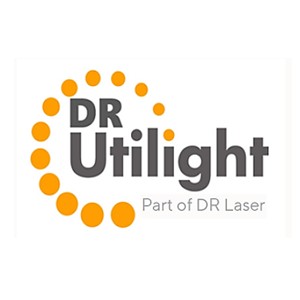
joint
Explore
DR Utilight Corp
2:15 PM
Laser Pattern Transfer Printing for High-Viscosity Pastes: Enabling Future Challenges in Microelectronics, Advanced Packaging & Photovoltaic.
Eyal Cohen
The miniaturization and complexity of modern microelectronics and advanced packaging present significant manufacturing challenges, often requiring the use of specialized low-viscosity inks and expensive plating processes. To address these limitations, we introduce Pattern Transfer Printing (PTP™), a novel laser-based, non-contact technology capable of microscale printing with high-viscosity pastes.
This technology enables the use of standard metal pastes, such as silver, copper, and solder, to produce high-resolution conductive patterns and electrodes. PTP™ has been successfully implemented in the photovoltaic (PV) industry for high-throughput, mass production, achieving fine-line fingers as narrow as 10 μm for both TOPCon and HJT cell technologies.
Furthermore, PTP™ serves as an effective alternative to costly plating methods in the semiconductor industry, capable of printing solder bumps down to 20 μm for advanced packaging applications. The unique capabilities of PTP™—combining high-resolution patterning, material versatility, and high aspect ratios—make it a key enabling technology for the next generation of semiconductor and microelectronic manufacturing.
Laser Pattern Transfer Printing for High-Viscosity Pastes: Enabling Future Challenges in Microelectronics, Advanced Packaging & Photovoltaic.
2:15 PM
joint
Explore
Break
2:35 PM
Break
Break
2:35 PM
joint
Explore
SOLRA-PV
3:05 PM
The Industrialization of Perovskite-Based Indoor Photovoltaics
Yousef Farraj
High-performance perovskite photovoltaic panels optimized for low-illuminance environments enable continuous power for IoT devices and consumer electronics without the need for disposable batteries. By tailoring the perovskite composition and device stack for spectral alignment with artificial light sources, combined with advanced encapsulation techniques, exceptional efficiency and operational stability are achieved under indoor conditions. The lab-to-fab transition is facilitated through scalable, industry-compatible printing and coating processes ensuring,, cost-effectiveness at scale. This integration of material innovation and manufacturing process control delivers compact, high-power indoor PV modules that advance sustainable, maintenance-free electronics and significantly reduce electronic waste in the rapidly growing energy harvesting market.
The Industrialization of Perovskite-Based Indoor Photovoltaics
3:05 PM
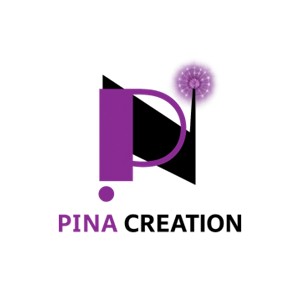
joint
Explore
PINA Creation
3:25 PM
Boosting Stability and Efficiency in Perovskite and Organic Solar Cells through Scalable Metal Oxide Nano Inks
Maryam Bari
PINA Metal Oxide Nano Inks: Engineered Electron Transport Layer (ETL) and Hole Transport Layer (HTL) Solutions for High-Performance, Low-Temperature Perovskite and Organic Solar Cells.
Efficient and stable perovskite and organic solar cells rely heavily on the quality of their ETL and HTL—yet current organic and high-temperature metal oxide materials often suffer from poor stability, interfacial defects, high cost, and limited compatibility with flexible substrates. PINA Creation addresses these challenges with advanced ZnO and SnO₂ nano inks (ETL) and NiO nano ink (HTL) that enable high-quality thin-film fabrication below 120 °C in just a few minutes. These formulations are chemically engineered for optimal interfacial contact and energy alignment, offering superior compatibility with perovskite layers in both n-i-p and p-i-n architectures, resulting in enhanced performance, scalability, and long-term
durability.
Boosting Stability and Efficiency in Perovskite and Organic Solar Cells through Scalable Metal Oxide Nano Inks
3:25 PM
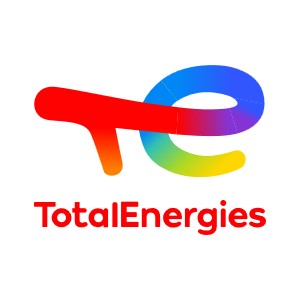
joint
Explore
Total Energies
3:45 PM
The market introduction of perovskite technologies from a developer’s perspective
Lars Oberbeck
TotalEnergies as one of the largest developers of renewable energies projects is actively assessing perovskite technologies. The presentation will look at the market introduction of perovskites from a developer's perspective, considering the costs and environmental impact as well as the importance of reliability. The barriers for market introduction and the requirements will be highlighted. For developers, getting access to field performance data and being able to test PV modules both in the field and in the lab is key for gaining trust in a novel technology.
The market introduction of perovskite technologies from a developer’s perspective
3:45 PM
joint
Explore
Networking + End
4:05 PM
Networking + End
Networking + End
4:05 PM
Track 1 - Estrel Hall A
Fuelium
Marina Navarro Segarra
Fit-To-Purpose batteries for responsible portable electronics.
3:55 PM
More
This talk presents a rationale for ecodesign portable batteries by re-thinking their life- cycle under an environmentally conscious framework. Through careful device design and advocating for a ‘fit-to-purpose’ approach, the development of these batteries is paired with the application value chain, in such a manner that even the power source end-of-life is redefined according to the use-case scenario. Several examples of these ecodesigned portable power sources will be
presented. Firstly, a paper-based battery commercialized by Fuelium to power portable diagnostic devices. These liquid activated batteries can be fabricated under the same procedures used in the rapid test industry and have shown the ability to power the most relevant features needed in portable medical devices, such as sensors, displays, wireless communications or heating. Then, further battery concepts developed at BCMaterials will be introduced, such as a bio-based battery using laser induced graphene current collectors in a cardboard tape format for smart packaging, as well as different approaches of biodegradable batteries for precision agriculture and environmental monitoring. Developed under this rationale, environmental sustainability has been placed as a core priority to guide the batteries’ conception and materialization, from materials to end-of-life. Hence all materials used as electrodes, electrolytes, or structural components are abundant, non-toxic and renewable; selected to meet the specific end-of-life requirements and endow a safe and ethical manufacturability.
Papierfabrik Louisenthal GmbH
Dr. Christoph Hunger
Large-scale fabrication of low-haze transparent metal mesh foils
4:15 PM
More
Indium tin oxide is widely used in transparent applications such as heated glass, antennas, touch screens or smart windows, but has limitations when it comes to e.g. brittleness and low resistances. Metal mesh structures offer a cheaper alternative for truly flexible and low resistance applications.A self-assembled crack template approach enables a fast R2R production on a large-scale. The metal mesh foil based on PET or PC shows both high transparency and low optical haze.
Alpha Micron
Pedro Coutino-Soto
Guest-host liquid crystal system for AR/VR/XR applications
4:35 PM
More
Augmented Reality (AR/XR) devices are a fast-expanding part of the wearable electronic industry that has attracted significant attention in recent years. One aspect that has hindered their growth and penetration into the broader consumer market is the lack of control of ambient lighting that in tandem with the image combiners such as waveguides control the image display contrast in different lighting conditions. Some technologies such as photochromic and twisted nematic LCDs have been attempted to address this issue. However, their optical and environmental performance was not considered acceptable. Guest host liquid crystals are a new class of materials that are now being successfully employed in commercial AR/XR eyewear to address this issue. In addition to enabling the required image contrast in different lighting conditions, the GHLCs have demonstrated the ability to reduce the overall power consumption of the device and as such extend the battery life during operation. This presentation will focus on this technology, its performance, and implementation in select XR devices.















